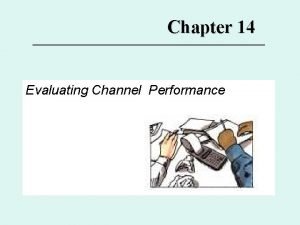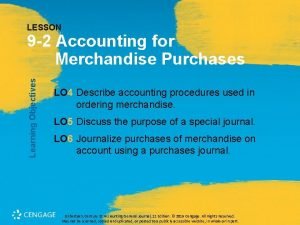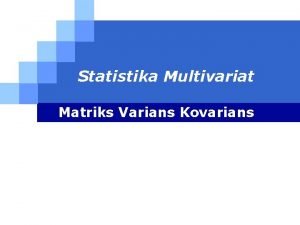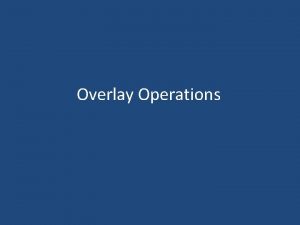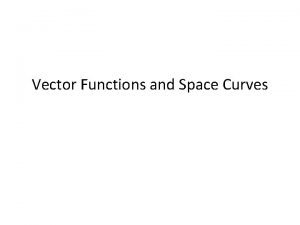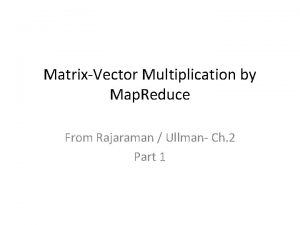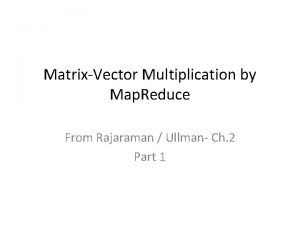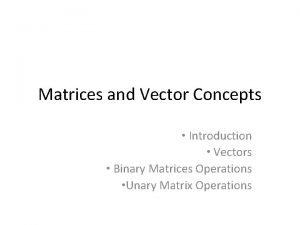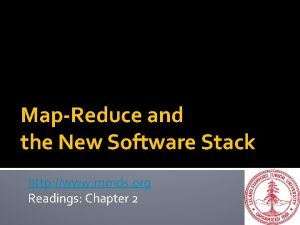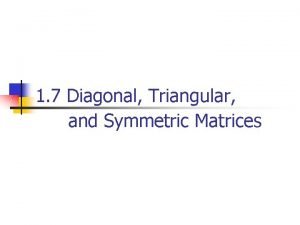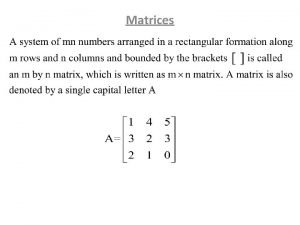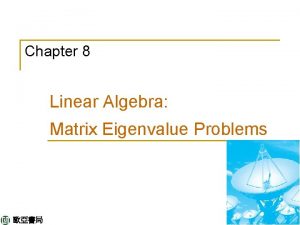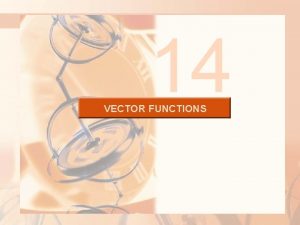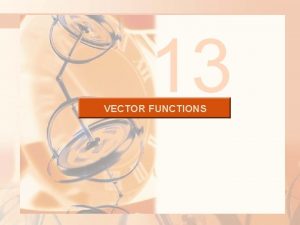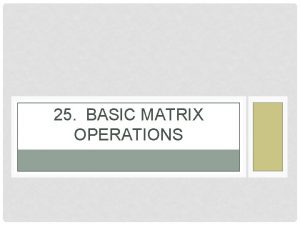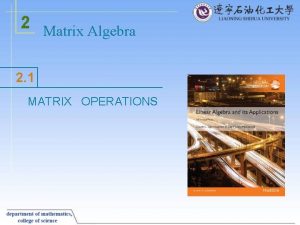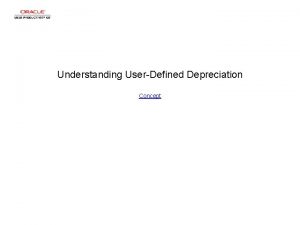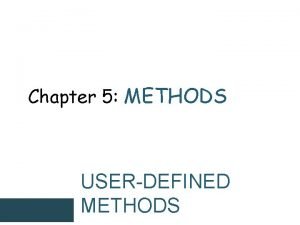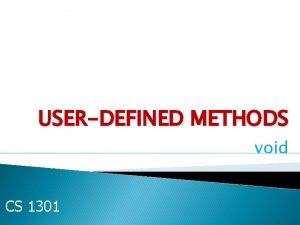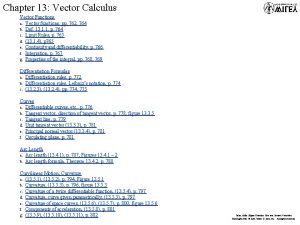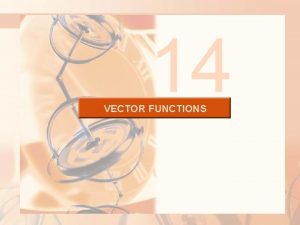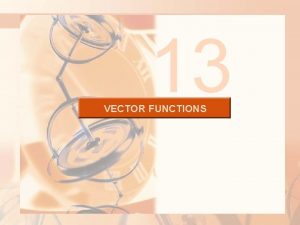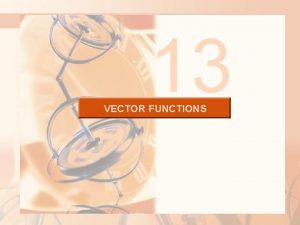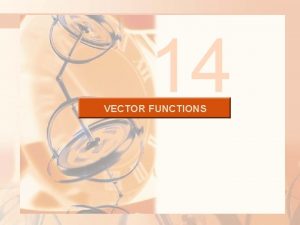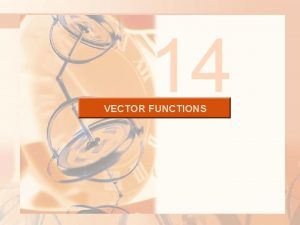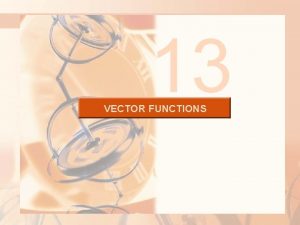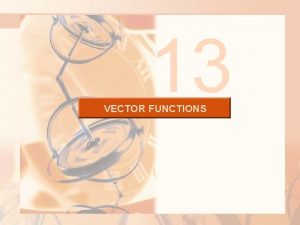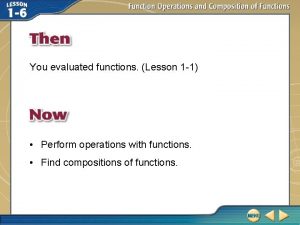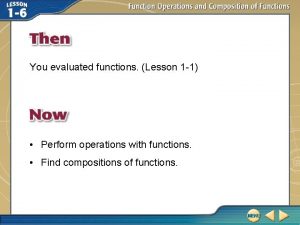Vector and Matrix Operations Evaluated with UserDefined Functions






















- Slides: 22

Vector and Matrix Operations Evaluated with User-Defined Functions Data Warehousing

Outline • • Research overview Motivation SQL limitations UDFs Scalar and aggregate UDFs Experiments Conclusions

Research overview: Relational database systems • Query optimization: query rewriting, linear recursive queries, indexing • Integration of statistical and machine learning algorithms: linear models, statistical tests, decision trees, Bayesian classifiers • OLAP: cubes, multi-level aggregations, pivoting, compression • Database cleaning: detecting and repairing errors • Locking in a parallel DBMS

Research overview: Machine learning • • Clustering: K-means, EM, streams Dimensionality reduction: PCA and Max Llh FA Regression: linear, logistic, non-linear models Bayesian classifiers: Naïve, Nets, MDA Association rules for prediction Medical data analysis Other topics: image mining, neural nets

Motivation • Perform statistical and machine learning analysis inside a DBMS • Users extract data sets to specialized statistical or mathematical tools • SQL is the standard language • A DBMS is a complex software system • Focus: DBMS architecture and scalability

SQL limitations • • • Relational model Limited array support Run-time overhead Set-oriented Not an imperative programming language

UDF advantages • • Programmed in C Called in a SELECT statement API provided by DBMS User does not need modifying DBMS internal code

UDFs limitations • • • In general, simple data types OS and DBMS architecture dependent Limited stack memory space Heap memory only for aggregate UDFs No I/O capability Null handling Parallel execution Compile-time memory allocation Not uniform across different DBMSs

Alternatives to UDFs • Inside DBMS – Internal C code in the DBMS – SQL code generation: arithmetic expressions or SQL existing aggregations • Outside DBMS – Statistical or machine learning packages – Statistical libraries called in C++/Java

Scalar UDFs • • Vectorial sum Dot product Distance argmin

Scalar UDFs application • Regression equations – Linear – Binary logistic • Distance computation in clustering or nearest neighbor classifiers • Multivariate pdfs

Aggregate UDFs • Best for functions that require a table scan on an entire table • Partition induced on data set with groups • Sufficient statistics

Aggregate UDFs for linear models • Descriptive models • Predictive models • Statistical tests

Sufficient statistics: SQL and C

Aggregate UDF optimizations • • Arrays Diagonal/triangular/full matrix Parameter passing on the stack Full parallel execution

Experiments • Compare SQL and UDFs • SQL standard aggregations on pivoted version of input table • Teradata Parallel DBMS

UDF: sum, argmin • Much faster than standard SQL aggregation • Slightly slower than arithmetic expressions

UDF: sufficient statistics alternatives in SQL • Simulate matrices with one entry per row with pivoted table • Aggregation list with all matrix on one row • UDF

UDF aggregate • One std aggregation significantly slower • UDF is faster than arithmetic expressions

UDF run-time execution • Scalar UDF bottleneck: disk I/O • Aggregate UDF bottleneck: memory

UDF scalability • Linear in n • Linear in d for scalar UDF • almost “flat” in d for aggregate UDF

Conclusions • • • Extend DBMS with mathematical operators UDF called in SQL queries Group-by capability Great performance Several UDF limitations can be solved
 How to solve evaluating functions
How to solve evaluating functions Evaluating functions and operations on functions
Evaluating functions and operations on functions Ready to be evaluated pqeb
Ready to be evaluated pqeb Small business subcontracting is only evaluated when
Small business subcontracting is only evaluated when Small business subcontracting is only evaluated
Small business subcontracting is only evaluated Evaluating channel member performance
Evaluating channel member performance A form requesting the purchase of merchandise.
A form requesting the purchase of merchandise. Directed line segment definition geometry
Directed line segment definition geometry Vector unitario formula
Vector unitario formula Vector resolution examples
Vector resolution examples Position vector r
Position vector r Matriks varian kovarian
Matriks varian kovarian Vector overlay operations
Vector overlay operations Vector functions and space curves
Vector functions and space curves Matrix vector multiplication by mapreduce
Matrix vector multiplication by mapreduce General vector
General vector Matrix vector multiplication mapreduce
Matrix vector multiplication mapreduce Unary matrix
Unary matrix Matrix vector multiplication by mapreduce
Matrix vector multiplication by mapreduce Diagonal matrix
Diagonal matrix Skew hermitian matrix
Skew hermitian matrix Dissimilarity matrix in data mining
Dissimilarity matrix in data mining Hermitian matrix and skew hermitian matrix
Hermitian matrix and skew hermitian matrix





